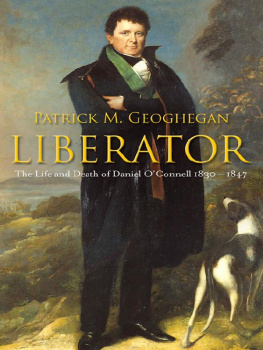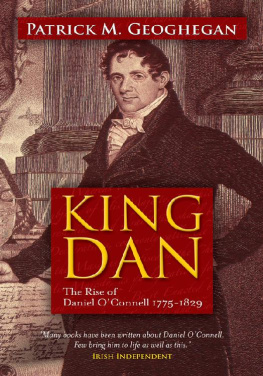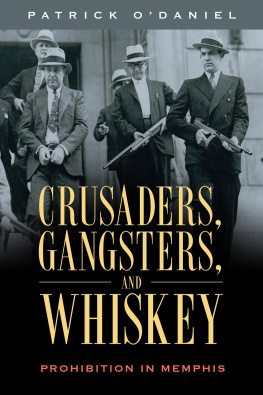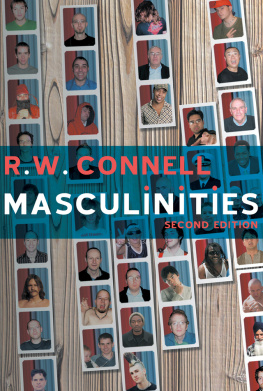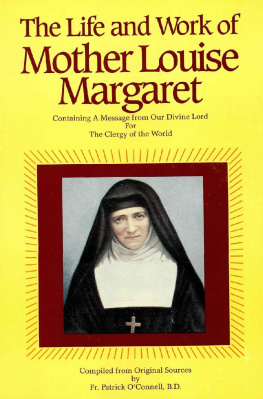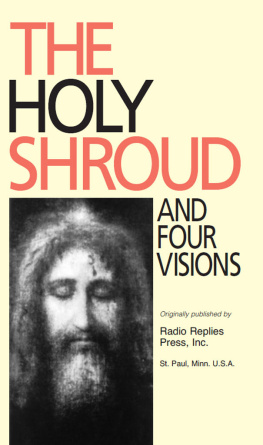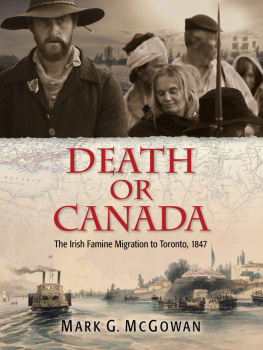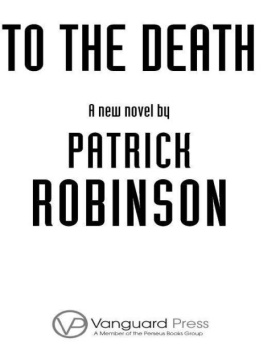Patrick M. Geoghegan - Liberator: The Life and Death of Daniel O Connell, 1830–1847
Here you can read online Patrick M. Geoghegan - Liberator: The Life and Death of Daniel O Connell, 1830–1847 full text of the book (entire story) in english for free. Download pdf and epub, get meaning, cover and reviews about this ebook. year: 2013, publisher: Gill & Company, genre: Non-fiction / History. Description of the work, (preface) as well as reviews are available. Best literature library LitArk.com created for fans of good reading and offers a wide selection of genres:
Romance novel
Science fiction
Adventure
Detective
Science
History
Home and family
Prose
Art
Politics
Computer
Non-fiction
Religion
Business
Children
Humor
Choose a favorite category and find really read worthwhile books. Enjoy immersion in the world of imagination, feel the emotions of the characters or learn something new for yourself, make an fascinating discovery.
- Book:Liberator: The Life and Death of Daniel O Connell, 1830–1847
- Author:
- Publisher:Gill & Company
- Genre:
- Year:2013
- Rating:4 / 5
- Favourites:Add to favourites
- Your mark:
- 80
- 1
- 2
- 3
- 4
- 5
Liberator: The Life and Death of Daniel O Connell, 1830–1847: summary, description and annotation
We offer to read an annotation, description, summary or preface (depends on what the author of the book "Liberator: The Life and Death of Daniel O Connell, 1830–1847" wrote himself). If you haven't found the necessary information about the book — write in the comments, we will try to find it.
Liberator: The Life and Death of Daniel O Connell, 1830–1847 — read online for free the complete book (whole text) full work
Below is the text of the book, divided by pages. System saving the place of the last page read, allows you to conveniently read the book "Liberator: The Life and Death of Daniel O Connell, 1830–1847" online for free, without having to search again every time where you left off. Put a bookmark, and you can go to the page where you finished reading at any time.
Font size:
Interval:
Bookmark:
Reviews of Patrick Geoghegans King Dan :
Geoghegan s well-thought-out, refreshing iconoclasm disturbs some stagnant pieties and enhances his already considerable reputation as a historian A fine piece of historical detective work the sparkling narrative further enhancing his reputation as one of the leaders of the new generation of Irish historians .
PROFESSOR PAUL BEW AND DR PATRICK MAUME, DUBLIN REVIEW OF BOOKS , 2008
A very readable and fresh look at one of the great figures in modern Irish history, and a fascinating insight into aspects of Irish life in the early 19th century. O Connell s colourful early lifehigh spending, constant debt, duelling, womanising and involvement with the United Irishmenis worthy of a historical novel .
PROFESSOR MARY E. DALY, THE IRISH TIMES
This volume has about it a freshness and readability and carries its scholarship lightly .
PROFESSOR DONAL MCCARTNEY, PROFESSOR EMERITUS OF MODERN IRISH HISTORY AT UCD, MAIL ON SUNDAY
History lecturer and broadcaster, Dr Patrick Geoghegan succeeds in explaining some of the biographical puzzles about O Connell .
MARTIN MANSERGH, THE IRISH INDEPENDENT
In his biography, Geoghegan ultimately casts O Connell as a protean figure who helped create the modern Ireland. It was the towering achievement of his life Geoghegan s book helps rescue his subject from fading into irrelevance in the mists of history .
THE SUNDAY TIMES
| INTRODUCTIONT his book follows on immediately from the events detailed in King Dan: the Rise of Daniel OConnell, 17751829 , published in 2008. That book began and ended with OConnell in 1829, at the height of his powers as a lawyer following the Doneraile conspiracy trials, and having won his greatest victory with the passing of Catholic emancipation. The night emancipation was secured, OConnell was warned that his career was over, because there was nothing left to achieve. But OConnells lifelong ambition was the restoration of the Irish parliament, and he knew that the greatest challenge of his life was yet to come. The rise of Daniel OConnell had taken fifty-four years, and it represented a number of different ascents. As a lawyer he had triumphed despite the obstacles in his path because he was a Catholic. As a public agitator he had succeeded in energising a moribund Catholic Association and turning it into a dynamic national movement. Through the force of his personality, and his extraordinary oratorical powers, he was able to achieve his objectives through exclusively peaceful meansthe use of moral forceand, in doing so, providing an inspiration to democratic movements around the world.
The intention from the beginning had been to subtitle this book The Fall of Daniel OConnell, 18301847. It is a subtitle that reflects the popular perception of OConnell following emancipation. He entered the British House of Commons, but failed in his attempts to secure Repeal, or even Justice for Ireland, in the 1830s. He attempted to lead a new national movement in the 1840swhich culminated in the massive monster meetings in 1843but backed down over Clontarf, and shattered the unity of the Repeal movement by his unseemly squabble with the Young Ireland movement. His death in Genoa, during the height of the famine, represented a tragic end for a career that had promised much, but which in the end had seemingly delivered little. The great historian W.E.H. Lecky recognised that there was something almost awful in so dark a close to so brilliant a career. But the more I engaged with the period 18301847 I realised this subtitle was misleading and inappropriate. There was a decline and fall, but it took place in the 1830s, when OConnells popularity began to fade and, broken-hearted, he considered retiring from politics and entering a monastery. In the early 1840s he faced the same problems as in the early 1820s: an apathetic public and a divided camp. But this time he was an aging man, and was unsure whether he still had the energy and ability, or even whether he was still trusted, to lead the nation once more. The resurrection of OConnell in 1843 was one of the most remarkable comebacks in world history, as he rolled back the years to travel around the country and speak to his people. It was a campaign that was watched with excitement around the world and which confirmed OConnell as the prophet of a new age and an entirely new way of conducting popular politics. The transformative campaign ultimately ended in failure, and OConnell ended his career a broken man. This, then, is the story of the rise, fall, resurrection, and decline of OConnell, in the dramatic final seventeen years of his life.
The Life and Death of Daniel OConnell, 18301847 is an attempt to capture this drama in a subtitle. Those who have never heard of OConnell may mistake this book for the study of a young man who died at the age of seventeen. But the subtitle is also an attempt to show what kind of book this is. Even more than the first book it is a study focused intensely on the character of OConnell. Therefore it only looks at the events that OConnell was closely involved with, and does not attempt to provide a wider study of the period. Rather than using OConnell to try and understand the major events of the time, for example the passing of the Great Reform Act or other important pieces of legislation in the 1830s, it is an attempt to do something very different and provide a first-person camera view of OConnellat work and at play, and as he embarked on a number of different campaigns to overturn the Act of Union.
The book begins with OConnells attempts to take his seat in May 1829 and his declaration that he would not be easily silenced. Part I then looks at OConnells career in Britain in the 1830s, beginning with his determined attempts to make an impression in the House of Commons, and ending with his fear at the close of the decade that his reputation had been compromised. Part II looks at his renewed attempts to win Repeal in the 1840s, and traces his decline all the way to his death in 1847. is a specialised study of OConnells position on slavery, and is similar to the chapter on OConnells career as a lawyer in the first book. This may appear incongruouswhy provide a study on slavery and not, for example, a chapter on his views on the poor law, or his relationship with his tenants? But the slavery question is fundamental to our understanding of OConnells character and, quite apart from the international dimension, it reveals much about his strengths (and weaknesses) as a politician and a national leader. Looking back on the issue now it seems obvious to us that OConnell was right and his opponents were wrong. But none of this was obvious at the time. Even some leading abolitionists, in Europe and the United States, believed that slavery was wrong because of what it did to the white owner, and were not convinced of the innate equality of the black person. OConnell was different. He felt the pain of the black slaves, he understood what it was like to be the victim of a real oppression, and he refused to abandon the cause no matter what the cost. It was the same determinationstubbornnessprinciplethat would prevent him from changing his mind on the use of physical force, and here his reputation paid the price.
Although it may not always be evident in this book, which places OConnell the man at the centre of things, it is not hard to understand why OConnell horrified and disgusted so many people in Britain. OConnell was seen as a coward and a crook, a man who insulted with impunity and then refused to back up his words when challenged, and who appeared to live off the money of the poorest Irish people. Part of this was anti-Irish prejudice, but there was more to it than that. OConnell confounded peoples expectations of what was acceptable public behaviour. By refusing to play by the accepted rules of the game, or even show a passing acquaintance with the accepted political conventions of the day, he was feared and detested. Lecky summarised the views held at the time: OConnell was nothing more than a foulmouthed, untruthful, vulgar, and venal demagogue.
Next pageFont size:
Interval:
Bookmark:
Similar books «Liberator: The Life and Death of Daniel O Connell, 1830–1847»
Look at similar books to Liberator: The Life and Death of Daniel O Connell, 1830–1847. We have selected literature similar in name and meaning in the hope of providing readers with more options to find new, interesting, not yet read works.
Discussion, reviews of the book Liberator: The Life and Death of Daniel O Connell, 1830–1847 and just readers' own opinions. Leave your comments, write what you think about the work, its meaning or the main characters. Specify what exactly you liked and what you didn't like, and why you think so.

